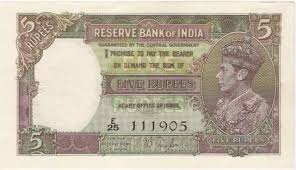The Indian rupee (₹) is the official currency of India and has been in circulation for centuries. It is the oldest currency in the world, with its origins dating back to ancient India. The rupee is subdivided into 100 paise and is issued by the Reserve Bank of India (RBI), the central bank of the country.
History of the Indian Rupee
The rupee’s history is interwoven with India’s rich cultural and economic heritage. The earliest mention of the rupee can be found in the Arthashastra, an ancient Indian treatise on economics written around 4th century BCE. In its early form, the rupee was a silver coin used as a unit of currency in various parts of India.
Over the centuries, the rupee has undergone numerous transformations, reflecting the changing political and economic landscape of the Indian subcontinent. In 1540, the Mughal emperor Sher Shah Suri introduced a standardized rupee coin, marking a significant step towards the currency’s widespread adoption.
The advent of British rule in India brought further changes to the rupee. In 1861, British authorities established the Paper Currency Department, initiating the issuance of paper rupee notes alongside the traditional silver coins. The introduction of paper currency facilitated trade and commerce, laying the foundation for India’s modern monetary system.
India’s independence from British rule in 1947 ushered in a new era for the rupee. The Indian government took control of the currency’s issuance, and the RBI was established as the central bank in 1949. Under the RBI’s stewardship, the rupee has evolved into a stable and widely recognized currency, playing a crucial role in India’s economic growth and development.
Value and Usage of the Indian Rupee
The value of the Indian rupee fluctuates against other currencies on a daily basis. The rupee’s exchange rate is determined by a combination of factors, including India’s economic performance, global market conditions, and supply and demand dynamics.
Within India, the rupee is the sole legal tender for all transactions, from daily purchases to large-scale commercial contracts. It is also accepted in neighboring countries like Nepal and Bhutan.
Denominations of the Indian Rupee
The Indian rupee is available in a variety of denominations, catering to the needs of different transactions. The current denominations of rupee notes include ₹2, ₹5, ₹10, ₹20, ₹50, ₹100, ₹200, ₹500, and ₹2000.
Counterfeiting and Security Measures
Counterfeiting of the Indian rupee is a significant concern, as it poses a threat to the integrity of the financial system. To combat this issue, the RBI has implemented stringent security measures into the design and production of rupee notes. These measures include specialized printing techniques, embedded security threads, and holograms. The RBI also regularly educates the public about counterfeit detection and reporting procedures.
The Indian rupee is a symbol of India’s national identity and its rich history. It plays a vital role in the country’s economic and financial landscape, facilitating trade, commerce, and overall economic growth. As India continues to develop, the rupee is poised to adapt and evolve, remaining a cornerstone of the nation’s economic and financial system.


Leave a Reply